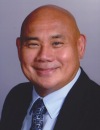2024年6月24日 星期一07:30 | Conference Registration, Materials Pick-Up, Coffee and Networking in the Exhibit Hall | 08:30 | Conference Plenary Session Takes Place in the Coolsingel Room
Please See Details of the Plenary Session on the LOACEU2024 Website Agenda.
| 13:00 | Networking Buffet Lunch in the Exhibit Hall -- Network with Exhibitors and View Posters | |
Session Title: Advances in Technologies and Research Efforts in Circulating Biomarkers and Extracellular Vesicles -- 2024 |
| | |
Session Venue: Coolsingel Room |
| | 13:55 |  | Conference Chair Welcome and Introduction to the Conference by Conference Chairperson
Dominique PV de Kleijn, Professor Experimental Vascular Surgery, Professor Netherlands Heart Institute, University Medical Center Utrecht, The Netherlands, Netherlands
|
| 14:00 |  | Keynote Presentation Nanospresso: Microfluidic Mixing of Nucleic Acids and Excipients to Make Nanomedicines
Raymond Schiffelers, Professor of Nanomedicine, University Medical Center Utrecht, Netherlands
Lipid nanoparticles are the frontrunner nanomedicines for the delivery of nucleic acid therapeutics. The COVID-19 mRNA vaccines were built on this technology. These lipid nanoparticles self-assemble around the mRNA through electrostatic and hydrophobic interactions. For mass production of lipid nanoparticles (like vaccines during a pandemic) impingement jet technology provides high throughput. For smaller batches, microfluidic mixing can provide an excellent platform for making high quality lipid nanoparticles. In the project NANOSPRESSO, we take this concept one step further to explore microfluidic mixing of personalized lipid nanoparticles in a cartridge for a single dose for a single patient produced in the hospital pharmacy. This concept offers attractive properties for the democratization of personalized healthcare. |
| 14:30 |  Innovative Flow Cytometry For Counting and Characterization of Extracellular Vesicles Innovative Flow Cytometry For Counting and Characterization of Extracellular Vesicles
Andreas Wicovsky, Sr. Global Market Development Manager Research Flow Cytometry, Beckman Coulter Life Sciences
Beckman Coulter offers advanced solutions for enrichment and analysis of extracellular vesicles (EV) . Our flow cytometry systems including the recently launched CytoFLEX nano, enable counting and high-resolution characterization of EV populations. In this talk, I will provide a general overview about our solutions in this field with a specific focus on the Flow Cytometry systems.
| 15:00 |  NTA - More than Size and Concentration NTA - More than Size and Concentration
Ingrid Bloss, Sales Manager Europe, Particle Metrix GmbH
In the last decade, Nanoparticle Tracking Analysis (NTA) has been established as the tried and trusted characterization method for biological particles like extracellular vesicles (EVs), exosomes and other particles in the nanomater range. The predominant use of this technology is the determination of size and concentration. However, the powers of Particle Metrix’s ZetaView® instrument family go far beyond these 2 key features. The talk will focus on exploiting the full range of capabilities of these instruments and will show several applications that demonstrate the powers of NTA.
| 15:30 |  Extracellular Vesicles: Paving the Way to Automation and Standardization in Precise Isolation and Single-particle Characterization Extracellular Vesicles: Paving the Way to Automation and Standardization in Precise Isolation and Single-particle Characterization
Stephane Mazlan, Regional Director (EMEA), Izon Science
Reproducible, efficient isolation is the foundation of all aspects of extracellular vesicle (EV) research and development, including the discovery, validation, and implementation of EV-based biomarkers. Izon Science has led the way in developing and producing products and services aimed at EV isolation for diagnostic purposes. With our qEV Gen 2 columns we have pushed isolate purity further than ever before, improving protein depletion in the EV-enriched volumes for both our 35 nm (98.8 ± 0.03 % depletion; 1.6-fold improvement on Legacy; p<0.05) and 70 nm (99.5 ± 0.09 % depletion; 1.4-fold improvement on Legacy; p<0.05) Series columns. Both Gen 2 series also see improved depletion of LDL and HDL as quantified using an ELISA for ApoB and ApoA1 respectively (p<0.05 for Gen 2 vs Legacy). These improved columns are already helping customers to improve their EV isolation for diagnostics. Stephane Mazlan (PhD), Izon’s Regional Business Director (EMEA), will discuss our new service, qEV PurePath for Diagnostics. This customizable service, and the new instrumentation developed as part of this diagnostics-focused project, will substantially improve the development and throughput of EV isolation for diagnostics, aiding your journey to commercialization.?Dr Mazlan will provide an update on Izon’s?product pipeline, including new members of the qEV family which are focused on isolating new subsets of particles and further improving EV isolate purity.?Most importantly, at Izon Science we use our experience in EV isolation optimization to work with you, helping you to bring your EV-based diagnostic to market.
| 16:00 | Late-Afternoon Coffee Break and Networking in the Exhibit Hall | 16:30 |  | Keynote Presentation EV MEET Cell: An Efficient EV-Target Cell Interaction through Modulation of the Extracellular Environment of Target cell
Sai Kiang Lim, Research Director, Institute of Medical Biology, A*STAR, Singapore
Mesenchymal stromal cells (MSC) have displayed promising therapeutic potential; nonetheless, no FDA-approved MSC product exists due largely to the absence of a reliable potency assay based on the mechanisms of action to ensure consistent efficacy. MSCs are now thought to exert their effects primarily by releasing small extracellular vesicles (sEVs) of 50-200 nm. While non-living MSC-sEV drugs offer distinct advantages over larger, living MSC drugs, elucidating their mechanism of action to develop robust potency assays remains a challenge. A pivotal prelude to elucidating the mechanism of action for MSC-sEV is how extracellular vesicles (EVs) communicate with their primary target cells. Given the inherent inefficiencies of processes like endocytosis, endosomal escape, and EV uncoating during cellular internalization, we propose an alternative EV communication approach, EV-MEET Cell, which stands for EV-Modulation of the Extracellular Environment of Target Cells. This approach involves modifying the external cellular milieu such that signals from a single EV could be transmitted to multiple recipient cells, thereby eliciting a more widespread tissue response. |
| 17:00 |  | Keynote Presentation EV-based Therapeutics Development: No Place for the Weak
Mario Gimona, Head of Manufacturing, GMP Unit, Paracelsus Medical University Salzburg, Austria
Extracellular vesicle (EV)-enriched preparations obtained from multipotent mesenchymal stromal cells (MSCs) are of particular interest for therapeutic use since they may convey anti-inflammatory, anti-fibrotic and cyto-protective activities to the target tissues. MSCs secrete a variety of bioactive autocrine and paracrine factors including cytokines, chemokines, extracellular matrix proteins, EVs and growth factors. The circulating MSC-derived secretome is thus a complex mixture of proteins, lipids, macromolecular assemblies and vesicular structures, including various types of EVs. Current activities aim at quantitatively describing one or more biological activities present in/on EVs that are beneficial in elucidating the complex mechanism-of-action of the vesicular secretome, and that can assist in the required dose-finding for pre-clinical and clinical application. Understanding EV composition and dynamics will further increase the value of these nanosized particles as a potential tool for companion diagnostics. |
| 17:30 |  | Keynote Presentation ExoPulse™ Production Platform: 1st, 2nd and 3rd Generation EV
Marcin Jurga, Chief Scientific Officer, EXO Biologics SA, Belgium
|
| 18:00 |  | Conference Chair NanoFACS Isolated Placental Cell- and Size-Specific EVs and T-cell Polarization
Terry Morgan, Professor of Pathology and Laboratory Medicine, Oregon Health and Science University, United States of America
How the placenta suppresses the maternal immune response to this invasive fetal organ is a long-standing mystery. New data suggest that placental extracellular vesicles (EVs) isolated from first trimester placental explants in vitro induce immune tolerance (ie; Bai K et al, 2022). This is similar to Treg induction by cancer EVs, but shares the method-based weakness of testing heterologous fractions of EVs from many different cell sources. A significant advance would be to isolate placental cell- and size-specific EVs and culture them with T-cells to determine the dose-response effect. Moreover, an important negative control would be to test isolated liposomes from the same plasmas. In this study, we hypothesize that placental invasive extravillous trophoblast EVs induce T-cell polarization from Th1 to Tregs compared with liposomes isolated from the same plasma samples. We isolated placental EVs and spiked-in 200nm liposomes by nanoFACS from banked human first trimester plasma samples. T-cell polarization cultures from banked PBMCs (positive control was IL-2 induced +/- TGF-b/retinoic acid) were validated and then compared with banked PBMCs treated with either placental EVs or liposomes. Our results show that placental EVs have PD-L1 on their surfac and compared with liposomes incubated with Th1 cells show significantly more Treg and Th2 polarization after 3 days in culture. |
| 18:30 | Networking Reception in the Exhibit Hall. French Wine Tasting Sponsored by Kloé. | 20:00 | Close of Networking Reception and Day 1 Conference Programming. |
2024年6月25日 星期二08:00 | For Morning Programming in the Coolsingel Room, Please View the Agenda for: Lab-on-a-Chip and Microfluidics Europe Track | 12:30 | Networking Buffet Lunch -- Network with Exhibitors and View Posters | |
Session Title: Biomarkers, Diagnostics and EVs: Regulation and Business |
| | |
Session Venue: Conrad Room |
| | 13:30 |  | Keynote Presentation Recent Developments in IVDR, Including LDTs
Erik Vollebregt, Partner, Axon Lawyers, Netherlands
- Recent developments in IVDR
- Developments in IVDR regulation of in-house developed devices / LDTs
- Another move of deadlines per risk class
- New obligations for manufacturers to inform of supply interruptions and discontinuations
|
| 14:00 | The Power of Scalable POC-Manufacturing in Challenging Times (PPWR, REACH, EU-Legislation)
Wouter Geurts, Business Development Manager - FILMS , TEKNI-PLEX , Belgium
In this brief presentation we’ll touch on the topics of IVD regulation,
REACH(PFAS) and PPWR, the Packaging & Packaging Waste Regulation
(*). We’ll also give an update on material innovation using COC and COP
and share an insight on advanced technology that has its roots in the
German automotive industry that can revolutionize manufacturing in
microfluidics.
(*) just before EU election, so the topic will be super hot. | 14:30 |  | Keynote Presentation Integrating Microphysiological Systems and Extracellular Vesicle-Based Technologies to Advance Regenerative Medicine
Danilo Tagle, Director, Office of Special Initiatives, National Center for Advancing Translational Sciences at the NIH (NCATS), United States of America
Microphysiological systems are microfluidic cell culture chips capable of recapitulating key functional aspects of physiological human tissue and organ response. MPS have many contexts of use including evaluation of toxicity/safety, and efficacy of promising therapeutic compounds, disease modeling of both rare and common diseases, as well as within the regenerative and precision medicine space. Extracellular vesicles (EVs) are nano-sized, membrane-enclosed carriers of bioactive lipids, protein, and nucleic acids that are used for intracellular communication. Extracellular vesicles (EVs), membrane-bound particles containing a variety of RNA types, DNA, proteins and other macromolecules, are now appreciated as an important means of communication between cells and tissues, both in normal cellular physiology and as a potential indicator of cellular stress and other environmental exposures and early disease pathogenesis. EVs have pleiotropic actions in physiological and pathological conditions. EVs are commonly heterogeneous in size, ranging from 20 to 1,000 nm in diameter depending on their origin and mechanism of release, direct shedding or budding from the plasma membrane. Exosomes are vesicles with a diameter of 20-100 nm formed by the inward budding of endosomal membranes to form large multivesicular bodies (MVBs) and released extracellularly when MVBs fuse with the plasma membrane. Exosomes have recently been studied for their potential use in therapy as a 1) targeted and non-immunogenic delivery system for drugs or biological molecules, and 2) in the maintenance of tissue homeostasis and their contribution to tissue repair and regeneration. For the past few years, MPS and EV-based technologies have been combined within the regenerative medicine space to find safer, more efficacious patient therapies, as well as to probe for non-invasive diagnostic biomarkers. Combination of these technologies could potentially help address a key drug development challenge, i.e., on-target delivery without off-tissue toxicity by delivering therapeutics (small molecules, macromolecules, nucleic acids, etc.) via EVs that only act at the diseased tissue, regardless of whether a target is expressed elsewhere. This presentation will summarize NIH-funded activities in exploring the therapeutic applications of exosomes along with application of new experimental models, including organ-on-chip (OOC) systems and in vitro approaches to extend findings. |
| 15:00 | Mid-Afternoon Coffee and Tea Break and Networking in the Exhibit Hall | 15:30 | Best Poster Awards Sponsored by Lab-on-a-Chip Journal, Royal Society of Chemistry (RSC) -- In the Coolsingel Room |
* 活动内容有可能不事先告知作更动及调整。
|
